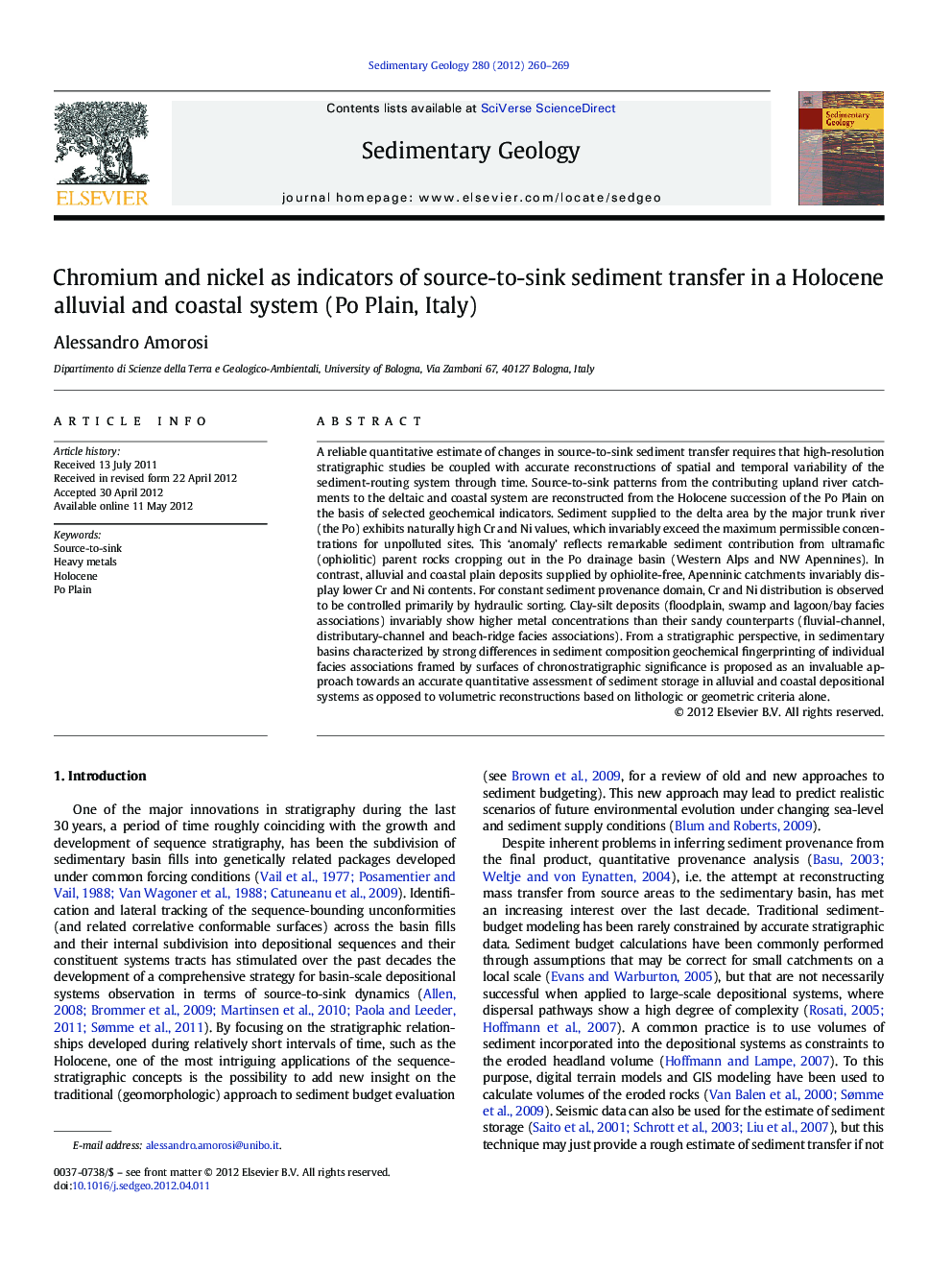| Article ID | Journal | Published Year | Pages | File Type |
|---|---|---|---|---|
| 4689670 | Sedimentary Geology | 2012 | 10 Pages |
A reliable quantitative estimate of changes in source-to-sink sediment transfer requires that high-resolution stratigraphic studies be coupled with accurate reconstructions of spatial and temporal variability of the sediment-routing system through time. Source-to-sink patterns from the contributing upland river catchments to the deltaic and coastal system are reconstructed from the Holocene succession of the Po Plain on the basis of selected geochemical indicators. Sediment supplied to the delta area by the major trunk river (the Po) exhibits naturally high Cr and Ni values, which invariably exceed the maximum permissible concentrations for unpolluted sites. This ‘anomaly’ reflects remarkable sediment contribution from ultramafic (ophiolitic) parent rocks cropping out in the Po drainage basin (Western Alps and NW Apennines). In contrast, alluvial and coastal plain deposits supplied by ophiolite-free, Apenninic catchments invariably display lower Cr and Ni contents. For constant sediment provenance domain, Cr and Ni distribution is observed to be controlled primarily by hydraulic sorting. Clay-silt deposits (floodplain, swamp and lagoon/bay facies associations) invariably show higher metal concentrations than their sandy counterparts (fluvial-channel, distributary-channel and beach-ridge facies associations). From a stratigraphic perspective, in sedimentary basins characterized by strong differences in sediment composition geochemical fingerprinting of individual facies associations framed by surfaces of chronostratigraphic significance is proposed as an invaluable approach towards an accurate quantitative assessment of sediment storage in alluvial and coastal depositional systems as opposed to volumetric reconstructions based on lithologic or geometric criteria alone.
